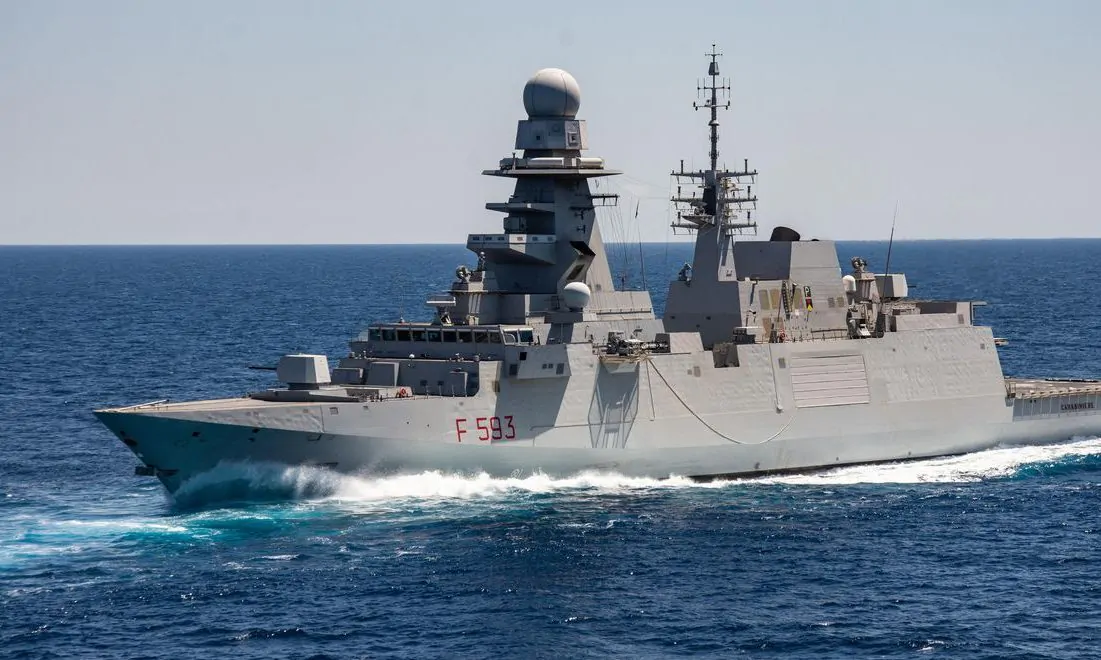Thursday, Austal USA’s bid for the U.S. Navy’s $795 million contract to build the next-generation guided missile Frigate was rejected in favor of a design offered by Fincantieri Marinette Marine, a Wisconsin-based shipbuilder. U.S. Senator Doug Jones, D-Alabama, did not hide his disappointment with the Navy’s decision. Austal builds the the Independence class littoral combat ship (LCS), expeditionary fast transports, and other navy vessels in Mobile.
“I am disappointed that the Navy chose not to award the contract for the next-generation guided-missile frigate to Austal USA,” Jones said. “Austal is the only U.S. shipbuilder providing ships to the Navy on time and on budget right now. It is my understanding that this award is for the first ten of a potential 20-ship buy, and I am confident that if Austal chooses to compete for future awards, the Navy will find Austal to be the best choice.
“Just last December, Austal USA celebrated 20 years of shipbuilding in Mobile,” Jones said. “Austal’s extraordinary success is testament to its unmatched local workforce and its ability to build highly capable, cost-effective ships safely and on schedule. I especially appreciate Austal’s commitment to the health and safety of its employees and the community, as well as to our national security, through the workforce protection measures it has implemented and its economic support donations in response to the COVID-19 pandemic. Our shipbuilders are critical to our national defense, and I am grateful for their dedication during this difficult time.”
Fincantieri will build an adapted variant of the Italian FREMM (European multi-purpose frigate) in Wisconsin at its Marinette shipyard. The contract also includes plans for up to nine more ships from the firm — a deal that’s ultimately worth more than $5.5 billion.
Fincantieri’s European built FREMM is already in service with both the Italian and French Navies.
Austal was the builder of the Independence class littoral combat ships as well as other designs including fast transports. When the LCS’s were first built, Austal produced the U.S.S. Independence, an all aluminum trimaran design, and Lockheed produced the U.S.S. Freedom. The two competing LCS designs were evaluated by the Navy and the initial decision was to complete the order as Freedom class LCS’s. Austal’s allies in the Navy and Congress rallied behind the innovative new ships and ultimate the Navy purchased both vessels in quantity, rejecting an Obama Administration plan to build just one class of littoral combat ship. There is still some hope that ten of the new guided missile frigates will be of the Fincantieri design; while ten could be of a second design that Austal could still compete for. General Dynamics and the Bath Ironworks also submitted frigate designs.
“The frigate will be an agile multi-mission warship,” said Navy assistant secretary James Geurts. “They’ll operate in all environments and will be more lethal, survivable and have increased self-defense and local-area defense capability and capacity over previous small-surface combatants.”
The new frigates are designed to defend against near-peer adversaries, such as China and Russia. The new frigate is designed to fight on both the high seas and near the shore, with more capabilities than littoral combat ships but at a much smaller price tag than cruisers and destroyers.
Speed was a factor in the decision. Because the Fincantieri design is a derivative of an existing class of warship, the European FREMM, the Navy believes that Fincantieri can deliver the new ships quicker than Austal or the other ship builders. The contract award came three months ahead of schedule, in order to get the new frigate program moving surprising many in the political world who did not expect a decision before late summer. The new frigate will have 300 tons more steel than the FREMM to improve its survivability.
“All this was done with an intense focus on cost, acquisition and technical rigor so that we got the best value for our warfighter and the taxpayer,” Geurts said.
Geurts expects delivery of the first ship in 2026, with the class reaching full operational capability by 2032.
The new ships will use a modified version of the SPY-6 radar Raytheon is developing to keep the Navy’s aging destroyers in the fight, along with Lockheed Martin’s Aegis Combat System.
Doug Jones is a member of the Senate Armed Services Committee.
Original reporting by Military.com and the Defense News contributed to this report.






















































